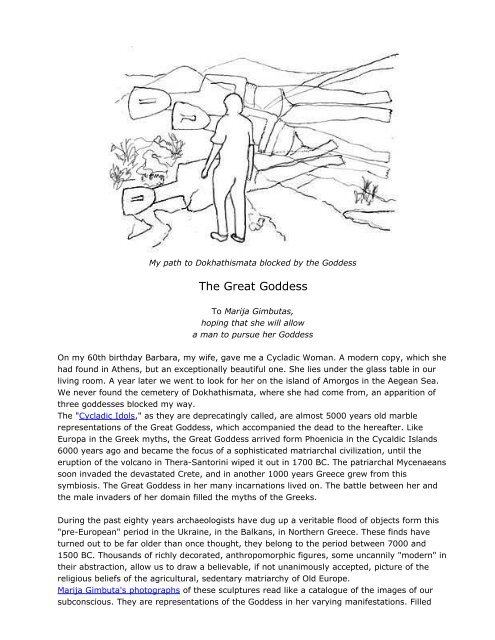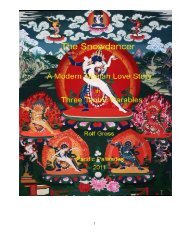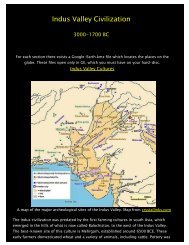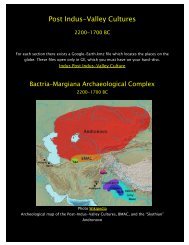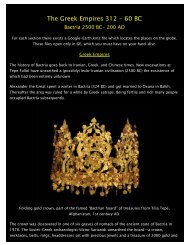On the Way to Arcadia (PDF) - Rolf Gross
On the Way to Arcadia (PDF) - Rolf Gross
On the Way to Arcadia (PDF) - Rolf Gross
Create successful ePaper yourself
Turn your PDF publications into a flip-book with our unique Google optimized e-Paper software.
My path <strong>to</strong> Dokhathismata blocked by <strong>the</strong> Goddess<br />
The Great Goddess<br />
To Marija Gimbutas,<br />
hoping that she will allow<br />
a man <strong>to</strong> pursue her Goddess<br />
<strong>On</strong> my 60th birthday Barbara, my wife, gave me a Cycladic Woman. A modern copy, which she<br />
had found in A<strong>the</strong>ns, but an exceptionally beautiful one. She lies under <strong>the</strong> glass table in our<br />
living room. A year later we went <strong>to</strong> look for her on <strong>the</strong> island of Amorgos in <strong>the</strong> Aegean Sea.<br />
We never found <strong>the</strong> cemetery of Dokhathismata, where she had come from, an apparition of<br />
three goddesses blocked my way.<br />
The "Cycladic Idols," as <strong>the</strong>y are deprecatingly called, are almost 5000 years old marble<br />
representations of <strong>the</strong> Great Goddess, which accompanied <strong>the</strong> dead <strong>to</strong> <strong>the</strong> hereafter. Like<br />
Europa in <strong>the</strong> Greek myths, <strong>the</strong> Great Goddess arrived form Phoenicia in <strong>the</strong> Cycaldic Islands<br />
6000 years ago and became <strong>the</strong> focus of a sophisticated matriarchal civilization, until <strong>the</strong><br />
eruption of <strong>the</strong> volcano in Thera-San<strong>to</strong>rini wiped it out in 1700 BC. The patriarchal Mycenaeans<br />
soon invaded <strong>the</strong> devastated Crete, and in ano<strong>the</strong>r 1000 years Greece grew from this<br />
symbiosis. The Great Goddess in her many incarnations lived on. The battle between her and<br />
<strong>the</strong> male invaders of her domain filled <strong>the</strong> myths of <strong>the</strong> Greeks.<br />
During <strong>the</strong> past eighty years archaeologists have dug up a veritable flood of objects form this<br />
"pre-European" period in <strong>the</strong> Ukraine, in <strong>the</strong> Balkans, in Nor<strong>the</strong>rn Greece. These finds have<br />
turned out <strong>to</strong> be far older than once thought, <strong>the</strong>y belong <strong>to</strong> <strong>the</strong> period between 7000 and<br />
1500 BC. Thousands of richly decorated, anthropomorphic figures, some uncannily "modern" in<br />
<strong>the</strong>ir abstraction, allow us <strong>to</strong> draw a believable, if not unanimously accepted, picture of <strong>the</strong><br />
religious beliefs of <strong>the</strong> agricultural, sedentary matriarchy of Old Europe.<br />
Marija Gimbuta's pho<strong>to</strong>graphs of <strong>the</strong>se sculptures read like a catalogue of <strong>the</strong> images of our<br />
subconscious. They are representations of <strong>the</strong> Goddess in her varying manifestations. Filled


